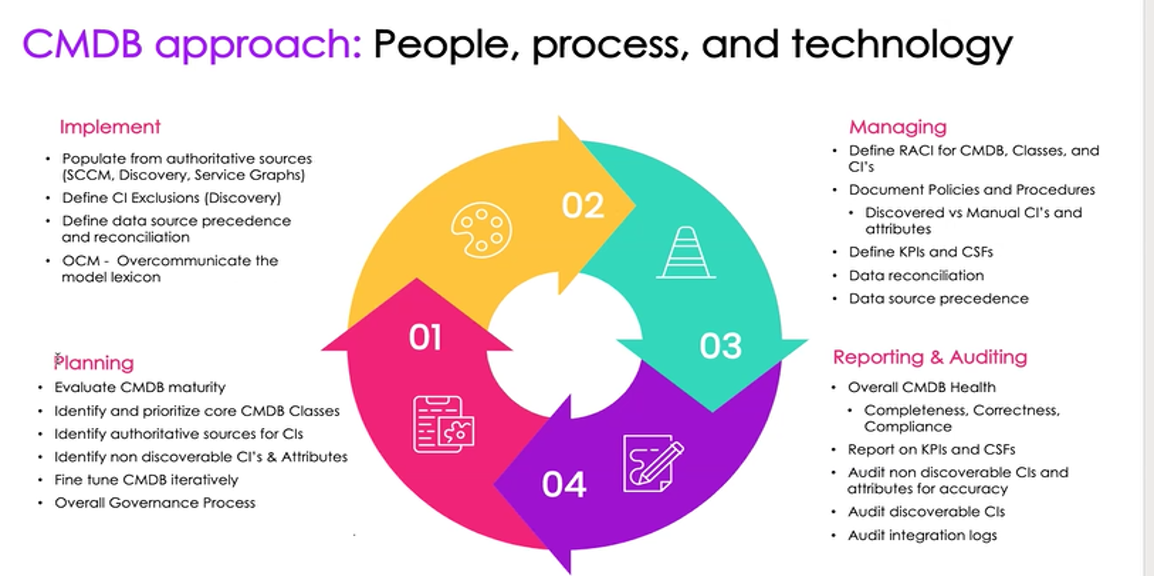HFS Research Podcast: The Next Wave with Bill...
Bill McDermott (Chairman and CEO of ServiceNow) and Ravi Kumar (CEO of Cognizant) join HFS Research Chief Analyst Phil Fersht to explore how AI is revolutionising enterprise...
Read MoreThirdera generates transformation, digitisation, and automation for our customers at the speed of NOW.
We help organisations adopt better patterns of work and get more from ServiceNow. Our team unlocks enterprise potential to elevate experiences across the world of work.
We help organisations adopt better patterns of work and get more from ServiceNow. Our team unlocks enterprise potential to elevate experiences across the world of work.
We help organisations adopt better patterns of work and get more from ServiceNow. Our team unlocks enterprise potential to elevate experiences across the world of work.
We help organisations adopt better patterns of work and get more from ServiceNow. Our team unlocks enterprise potential to elevate experiences across the world of work.
We help organisations adopt better patterns of work and get more from ServiceNow. Our team unlocks enterprise potential to elevate experiences across the world of work.
We help organisations adopt better patterns of work and get more from ServiceNow. Our team unlocks enterprise potential to elevate experiences across the world of work.
We help organisations adopt better patterns of work and get more from ServiceNow. Our team unlocks enterprise potential to elevate experiences across the world of work.
We help organisations adopt better patterns of work and get more from ServiceNow. Our team unlocks enterprise potential to elevate experiences across the world of work.

.jpg?width=500&height=276&name=filter%20group%20of%20people%20at%20desk%20laptop%20laughing%202021-10%20(1).jpg)


Insurance Provider Projects $75MM Gain in Business Value from Asset Management Transformation
Read more
.jpg?width=500&height=276&name=Multichannel%20pipette%20tips%20reaction%20mixture%20plastic%20wells%202022-05%20(1).jpg)
.jpg?width=500&height=276&name=group%20-%20statistical%20analysis%202023-03%20yellow%20pink%20(1).jpg)
Balancing mission-driven goals with operational efficiency requires innovative solutions that can streamline processes and enhance programme delivery without straining budgets.

UN Agencies Rely on Thirdera and ServiceNow to Support the Ukrainian Aid Response
Read moreDigitise and automate workflows to enhance the customer experience, online and in-store.

.jpg?width=500&height=276&name=Servers%20data%20center%20room%20with%20bright%20speed%20light%202022-05%20(3).jpg)
Global SAP on Cloud Leader, Lemongrass, Embarks on Multi-Continent ITSM Overhaul
Read more

Stay up to date with the insights from ServiceNow experts and explore our blogs, news, case studies culture posts, partner updates and more.
Stay up to date with the insights from ServiceNow experts and explore our blogs, news, case studies culture posts, partner updates and more.
.png?width=500&height=276&name=MicrosoftTeams-image%20(638).png)
Stay up to date with the insights from ServiceNow experts and explore our blogs, news, case studies culture posts, partner updates and more.
.png?width=500&height=276&name=MicrosoftTeams-image%20(638).png)
Stay up to date with the insights from ServiceNow experts and explore our blogs, news, case studies culture posts, partner updates and more.
.png?width=500&height=276&name=MicrosoftTeams-image%20(638).png)
Stay up to date with the insights from ServiceNow experts and explore our blogs, news, case studies culture posts, partner updates and more.
.png?width=500&height=276&name=MicrosoftTeams-image%20(638).png)
Stay up to date with the insights from ServiceNow experts and explore our blogs, news, case studies culture posts, partner updates and more.
.png?width=500&height=276&name=MicrosoftTeams-image%20(638).png)
Stay up to date with the insights from ServiceNow experts and explore our blogs, news, case studies culture posts, partner updates and more.
.png?width=500&height=276&name=MicrosoftTeams-image%20(638).png)

A healthy configuration management database (CMDB) is vital to the success of any organization’s digital transformation. Successfully deploying your CMDB is critical for providing the foundation your organisation needs to thrive in a digitally competitive market.
Effective CMDB deployment requires a detailed configuration management plan to implement, design, and sustain a configuration management capability. And while CMDBs do require a lot of upfront planning, it’s an investment well worth making: an effective CMDB plan results in less downtime, reduced costs, and greater service performance.
According to ServiceNow, a well-configured CMDB can save businesses as much as 40 per cent in IT costs— exclusive of the costs associated with unplanned outages. A CMDB is an essential IT tool for maintaining high service availability, and when you consider that unplanned downtime on average costs companies $5,600 USD per minute, it is easy to see why building a comprehensive CMDB is critical for an organisation.
With the above statement in mind, what is the process needed to implement a panoptical view of the CIs in your organisation?
In this blog post, we’ll walk you through creating your own ServiceNow CMDB deployment plan so that you can get the most out of the solution—without any headaches or hiccups.
A configuration management database—an ITIL term for a database where an organisation stores information about its hardware and software—provides a big-picture view of all an organisation’s IT assets. The CMDB acts as a data warehouse where a company can store critical data about its configuration items (CIs)—components that need to be managed to deliver an IT service. ServiceNow’s CMDB provides information on an organisation’s CIs—items like servers, applications, routers, or even portfolios—compiling it with their associated relationships into one accessible solution.
The most significant benefit that a CMDB offers is that it takes siloed data from across the entire organisation that your IT team needs and puts it all in one central location. A CMDB gives IT teams access to all the information they need to maintain service uptime and make IT decisions with confidence.
Successful CMDB deployment offers IT teams and enterprises a number of benefits:
CMDB is sometimes referred to as “IT for your IT” because it provides teams with critical information right at their fingertips. When deployed correctly, it ensures that they have the right data to improve business outcomes. The CMDB with its relationships is the foundation for an organisation's Decision Engine. Having a complete CMDB allows an organisation to operationalise and automate decisions. This allows IT infrastructure to have a faster resolution of incidents, improved efficiency and accuracy in change management, and the ability to design and implement a continuous improvement process.
A preliminary, yet critical task before implementing ServiceNow CMDB in your organisation is to identify the purpose of the CMDB: what are the goals, objectives, and outcomes you’re hoping to achieve?
Your configuration management goals should align with your company’s overarching business objectives to ensure you’re taking action on what will have the largest impact on your business. Almost every successful deployment has established goals so take the time now to articulate what you want to accomplish, your projected business outcomes, and how you will measure these outcomes.
It’s also helpful to connect the use cases for your CMDB back to your organisation’s specific strategic initiatives. Some examples may include:

To successfully implement ServiceNow CMDB in your organisation, you need to have a plan:
Here are four steps to help execute that plan and support a seamless ServiceNow CMDB deployment.
Early leadership buy-in combined with a well-built configuration team and governance structure will create long-term credibility and trust in the configuration management process.
Each deployment team member should have plainly defined roles, authority, and responsibilities. Document each RACI chart (Responsible, Accountable, Consulted, Informed) to ensure every member has the ownership and support they need to make required changes.
In addition to a dedicated team, a configuration control board (or CCB) should serve as a steering committee. They will oversee the implementation and ensure every configuration management effort has a solid value proposition for the organisation. The CCB is critical to ensure that your configuration management stays on track and ties back to the company's strategic goals.
When it comes to creating your plan, we have one saying: don’t try to boil the ocean.
It is critical to start small when designing your CMDB deployment plan. It provides quick wins and provides your team the time they need to familiarize themselves with the CMDB, its function, and its features. Once your team gains a better understanding, grow gradually from there.
Now that your CMDB use cases are identified, it’s time to determine the CI classes and attributes that will support those use cases. Identify the types of CI classes that you want to manage—such as database servers, applications, storage devices, firewalls, application servers, and network routers—ensuring these CIs tie back to your use cases. Once you’ve identified the CI classes, you’ll next want to determine the specific attributes you want to track. For each CI, for example, you may want to track attributes like CPU and memory. Remember, CI tables can get very complex, very quickly—so aim to start as simple as possible.
Using the common service data model (CSDM)—a ServiceNow framework for building out your CMDB—is also important to maximise business outcomes, ensure your ServiceNow instance is organised, and expand the platform without technical debt or sprawl. Watch this on-demand webinar to learn more about aligning your CMDB to the CSDM to improve service performance.
Identification of authoritative sources is important for every CI class. Enterprises have invested money in third-party tools to manage the environment and infrastructure. These tools contain a wealth of information that can be used to provide a more accurate and complete CMDB. Sources such as, but not limited to, ServiceNow Discovery, Microsoft SCCM®, JAMF®, or HCL Software’s BigFix® solution can be integrated with the ServiceNow CMDB using pre-built integrations or Service Graph connectors to create a true multi-source CMDB.
Just like any large project, organisational change management (“OCM”) is important to facilitate the adoption of the CMDB and the associated processes and policies. OCM ensures that you get the greatest value from the implementation of the CMDB by helping those impacted by the new processes and technology to (1) understand the value the change brings and (2) make the transition and adopt the changes to how they work. Our approach to effective OCM is focused on the ‘CATS’ framework, by creating a plan rooted in Communication, Adoption, Training, and Sustainment activities to drive the adoption of new processes and changes to the organisation in alignment with industry standards and best practices.
Each attribute within every CI class should be clearly mapped to an authoritative source of data such as SCCM, ServiceNow Discovery, JAMF, BigFix, etc. Multiple sources can be configured for the initial creation of the CI, then the authoritative source can be set on each attribute to prevent other sources from changing the value of the attribute going forward. This allows for the CMDB to contain the highest quality data from the authoritative source of choice for each CI class while still allowing the first source to create the CI record as soon as possible. One of the best solutions to this is the Service Graph connectors available from the ServiceNow Store and the IntegrationHub ETL plugin. Both solutions follow best practices for integrating third-party data into the CMDB.
It is important to clearly document policies and procedures for updating and maintaining CIs within the CMDB. Updates to CMDB should follow change processes with reviews and approvals by key stakeholders. As the data within the CMDB becomes more important to both IT and business processes and decisions, ensuring the quality and trustworthiness of the data is paramount. Policies and procedures on how data is populated, managed, and maintained will help ensure the reliability of the data in the CMDB.
Defining Key Performance Indicators (KPIs) and Critical Success Factors (CSFs) are important step in building a successful and healthy CMDB. KPIs and CSFs provide a way to measure success in building and the ongoing maintenance of the CMDB. Having measurable metrics related to Completeness, Compliance, and Correctness of the data within the CMDB ensures that the appropriate data attributes are consistently present and available for important IT and business decisions based on CMDB data.
Another step to help ensure a healthy and reliable CMDB is to configure data reconciliation. This helps prevent duplicate CIs when populating data from multiple sources. Using the CI Class Manager, reconciliation rules can be configured on a class-by-class basis. Reconciliation rules help the Identification and Reconciliation engine in locating and updating existing records in the CMDB rather than creating new records every time data is loaded from various sources.
A CMDB isn't a “set-it-and-forget-it” IT solution—its health and performance need to be continuously monitored and communicated across the organisation.
To measure the health of your CMDB, there are three key performance indicators (KPIs) you should be regularly tracking—all of which are easily accessible from the ServiceNow CMDB dashboard. These metrics—also known as the 3 C’s—are as follows:
With insights into the performance of the CMDB, it’s time to communicate that to the broader governance team and key stakeholders. When communicating to various functions, be sure to highlight how a healthy CMDB benefits their processes and priorities. Here are a few examples:
By empowering IT and bringing otherwise siloed data to one central platform, CMDB offers users across the organisation access to information to aid their decisions and execution.
Any good project starts with a good plan and a set of goals in mind. The same is true for your ServiceNow CMDB implementation.
The health of your CMDB is directly correlated to business outcomes. And often, much of the success of a CMDB depends on advance planning and preparation. Getting expert help from an implementation partner like Thirdera—from the early stages of CMDB deployment through to its successful go-live—is critical to ensuring your CMDB fuels insights, reduces IT waste, and prevents costly downtime. With the right help and plan in place, there’s no limit to what ServiceNow CMDB can help you achieve.
Get in touch today to discover how Thirdera—the largest and most experienced pure-play ServiceNow partner in the world—can help you optimise your ServiceNow CMDB deployment.
Bill McDermott (Chairman and CEO of ServiceNow) and Ravi Kumar (CEO of Cognizant) join HFS Research Chief Analyst Phil Fersht to explore how AI is revolutionising enterprise...
Read MoreAs artificial intelligence (AI) and machine learning (ML) continue to transform entire industries, organisations increasingly need robust governance and visibility into these...
Read MoreArtificial intelligence (AI) is changing how we interact with technology, driving improvements in business processes and customer experiences. Two of the most talked about...
Read MoreOriginally introduced in ServiceNow Utah, Application Portfolio Management (APM) was a part of the Strategic Portfolio Management (SPM) toolset. APM offered the capability to...
Read More